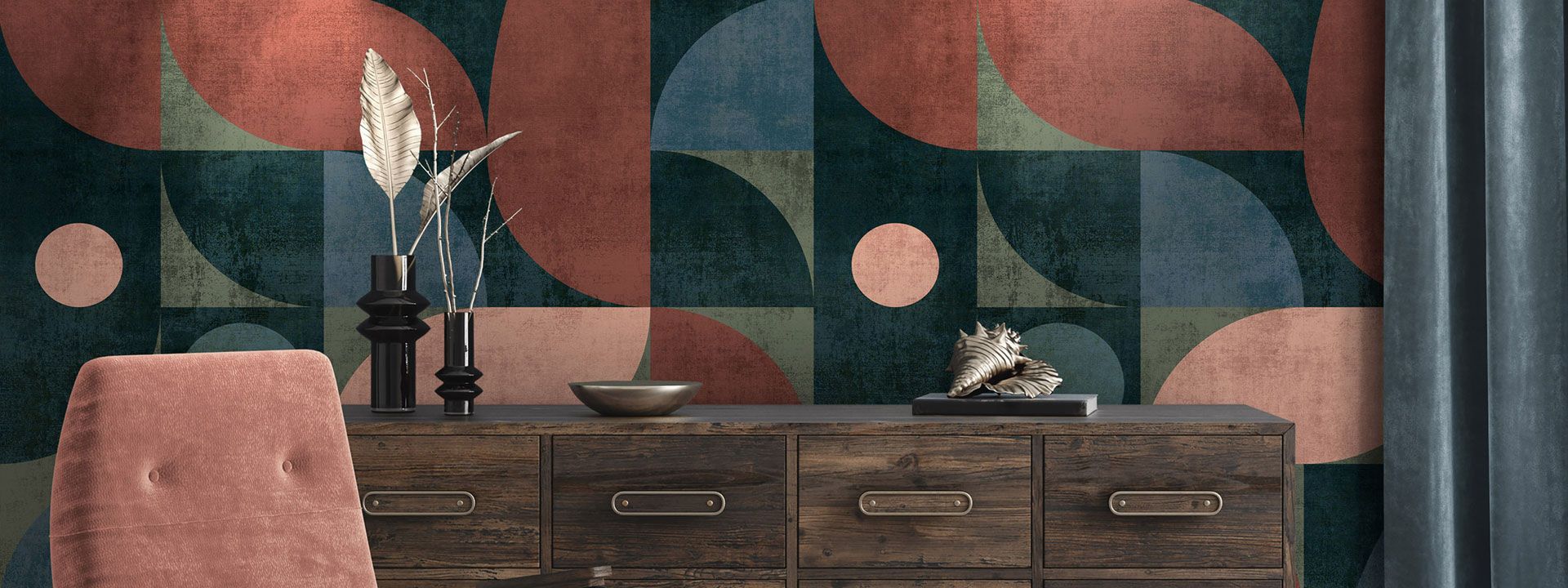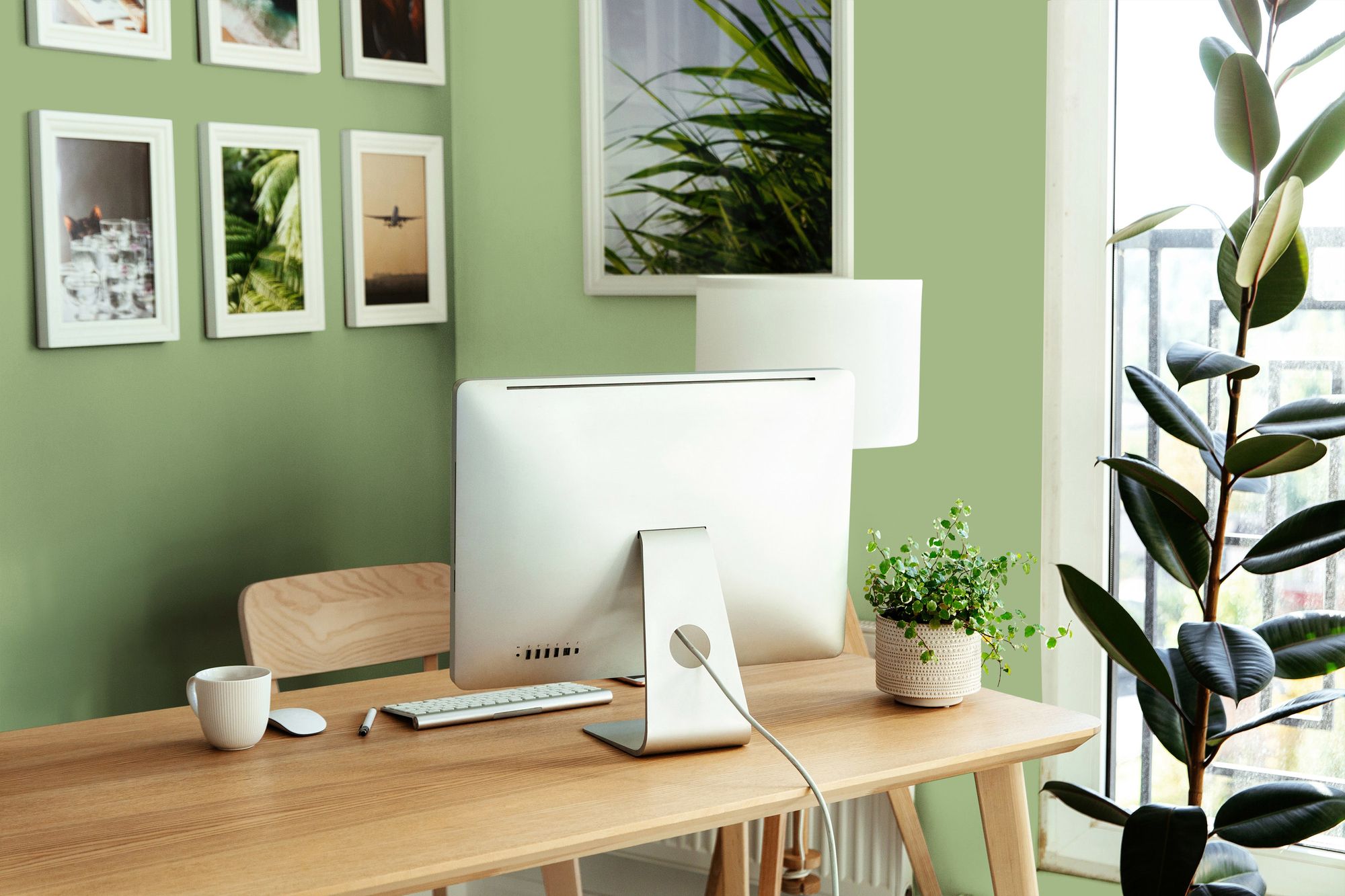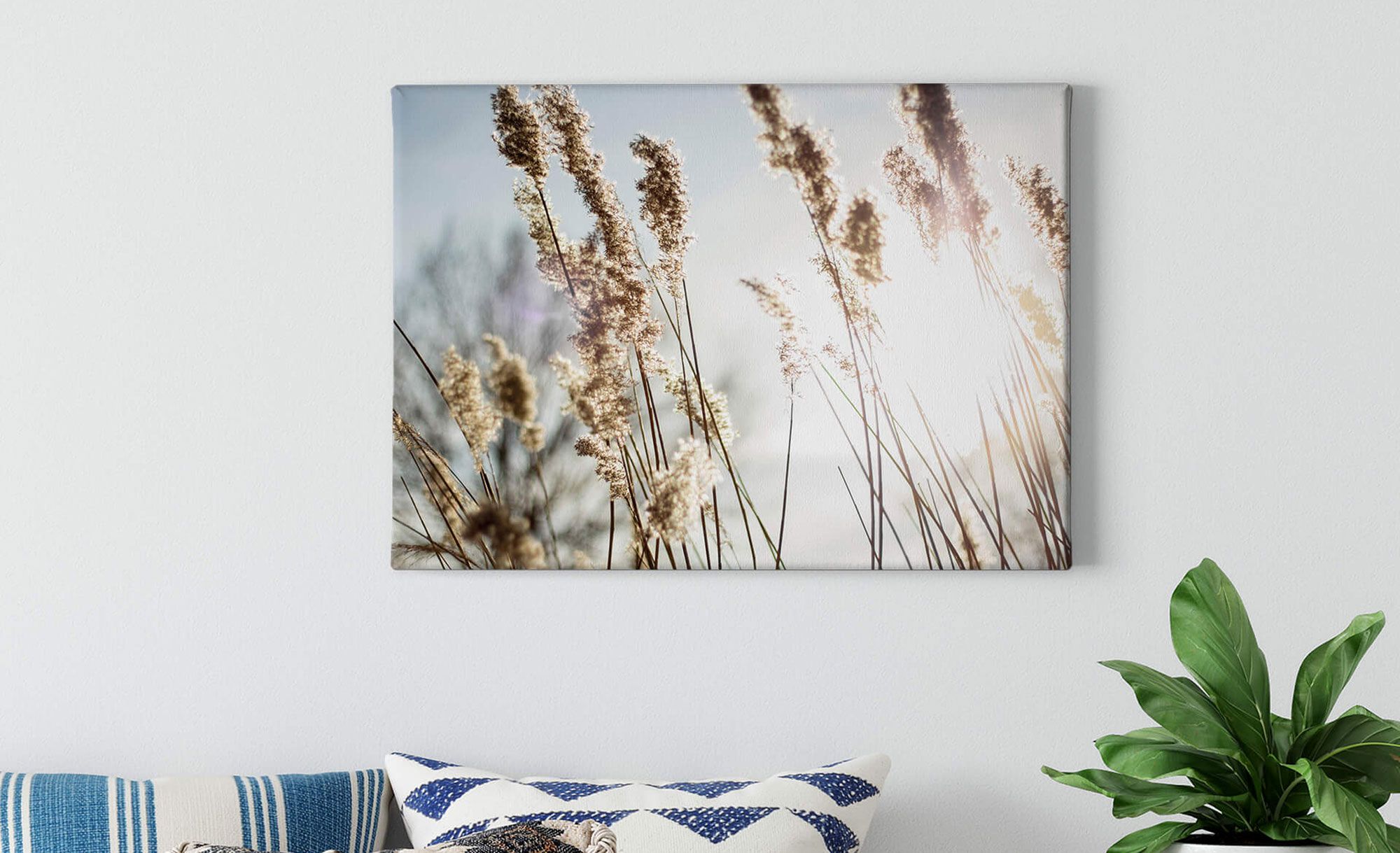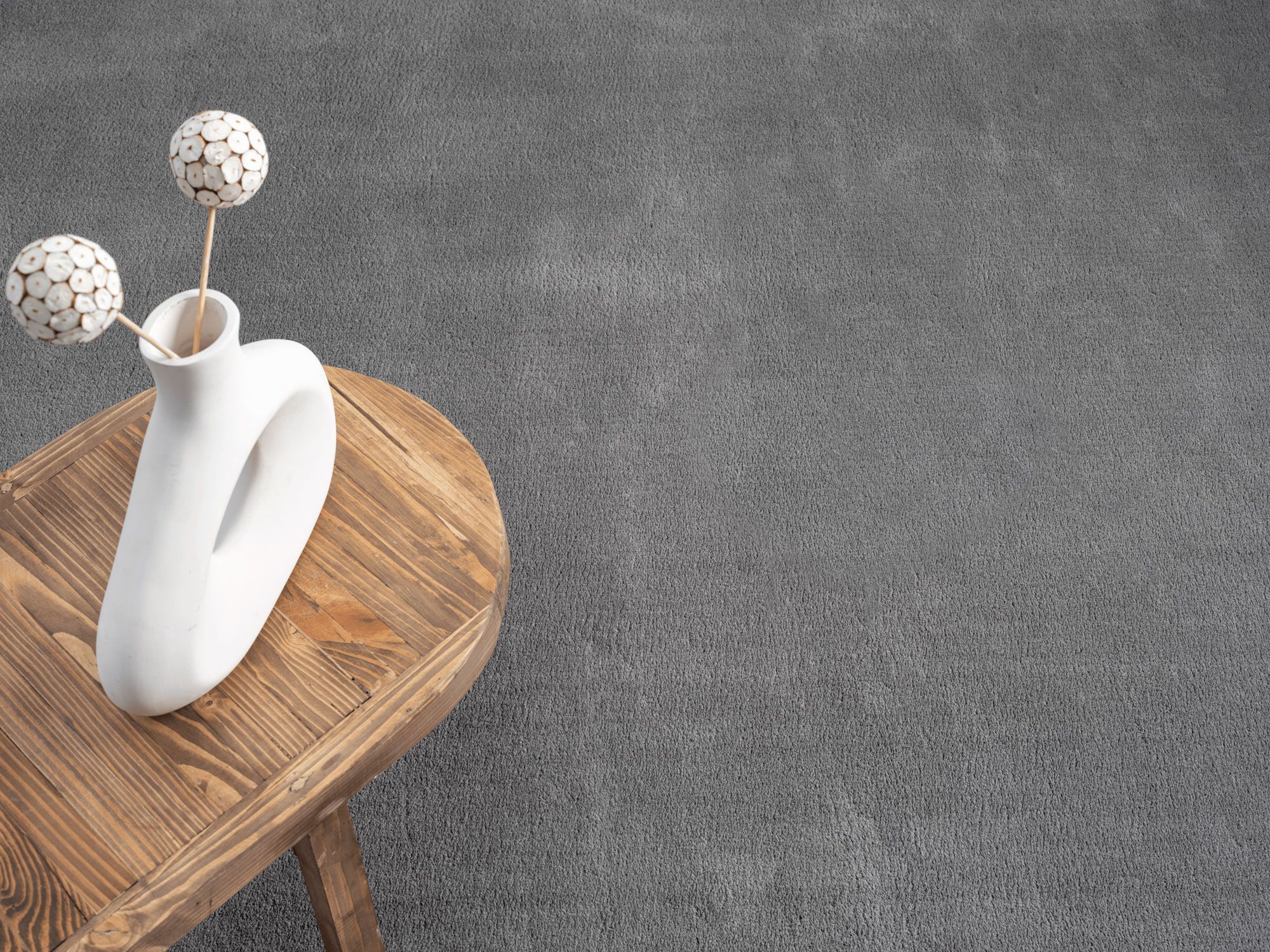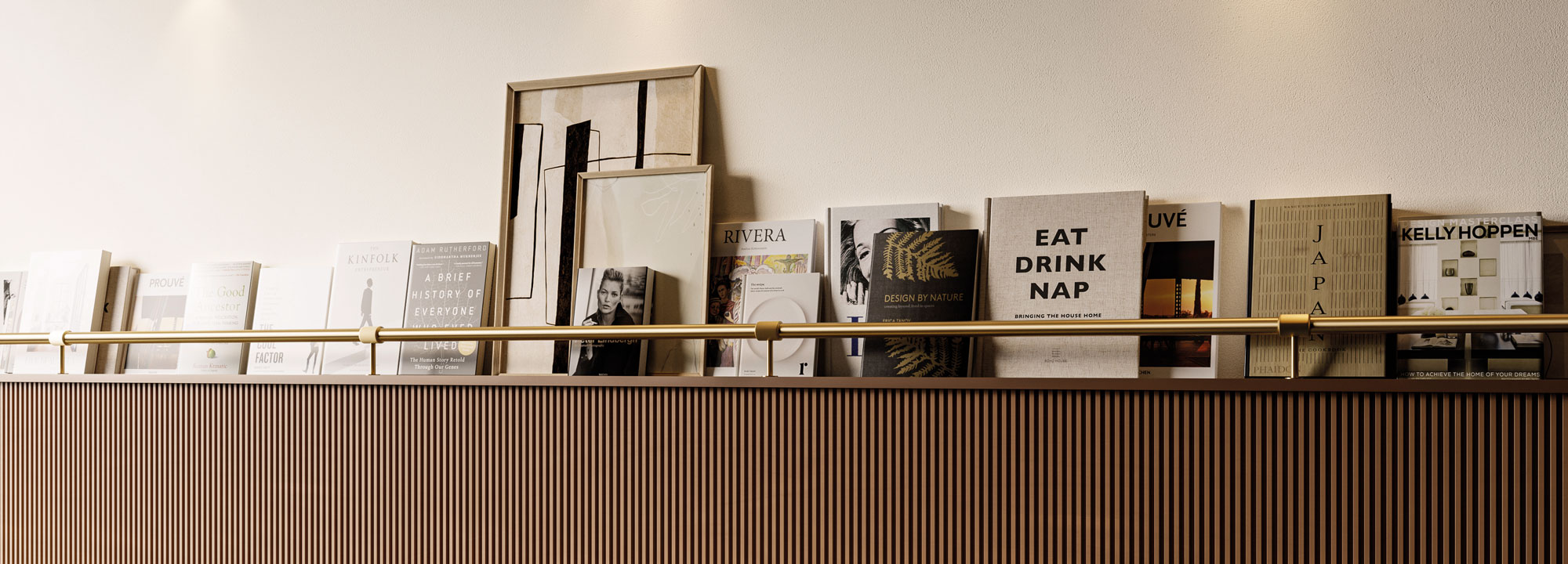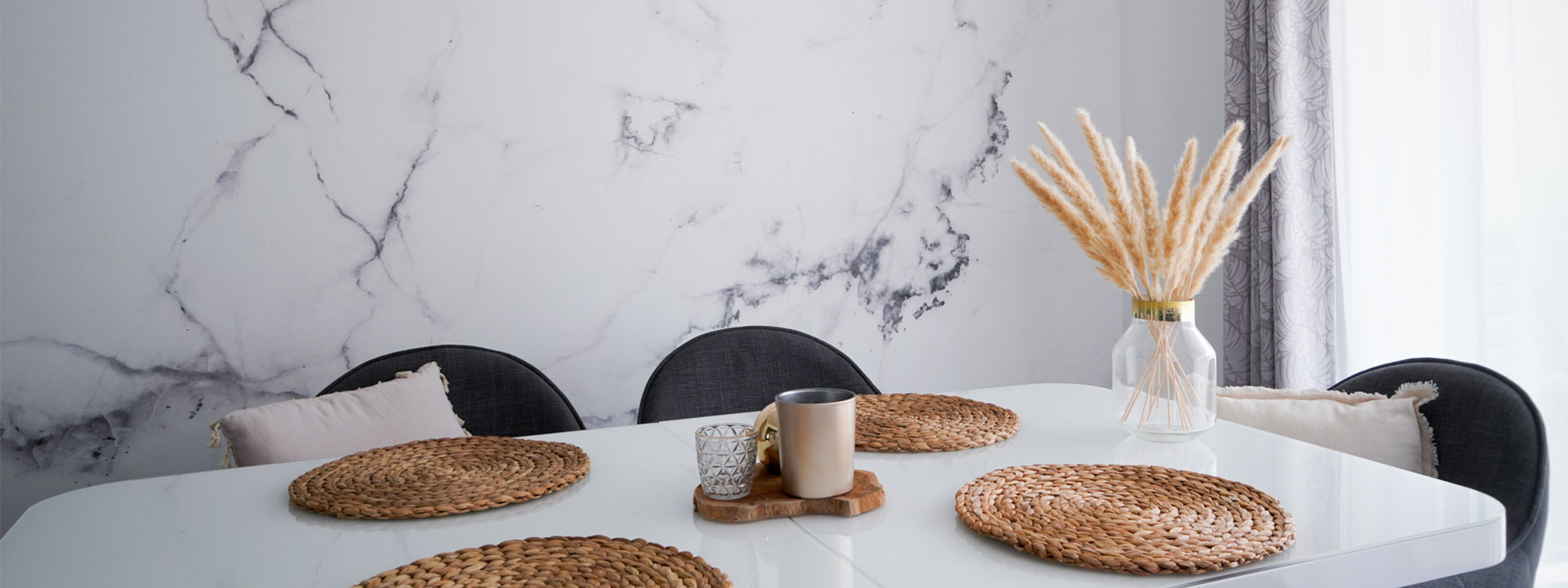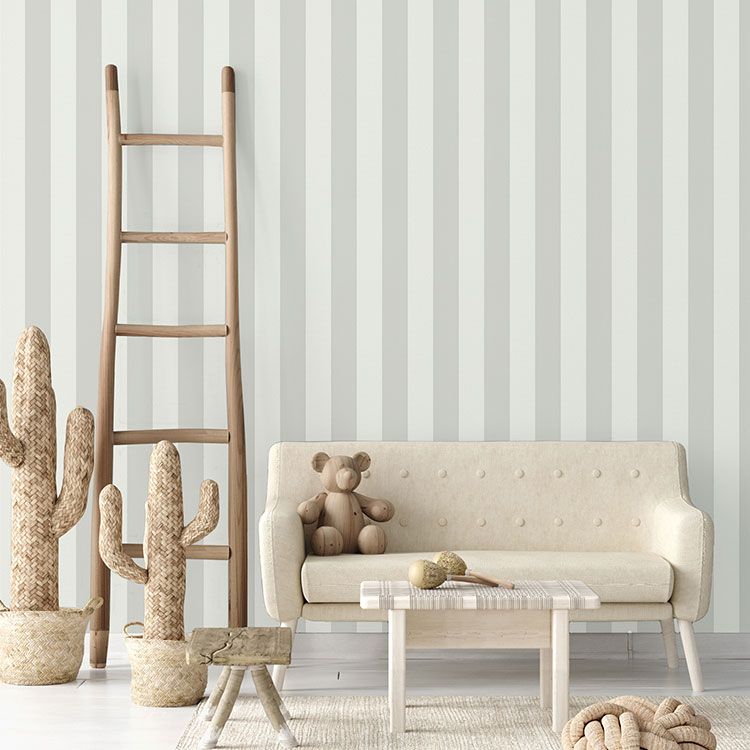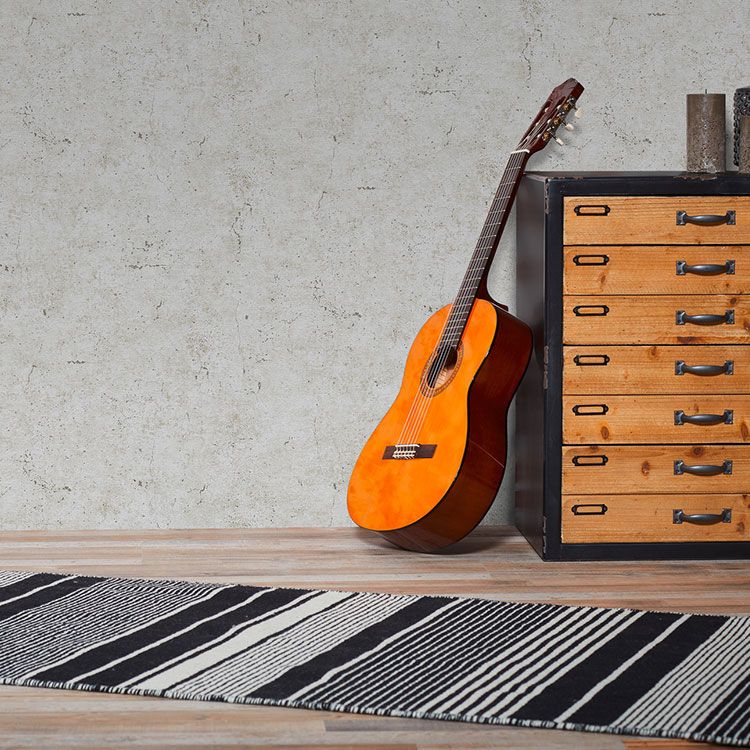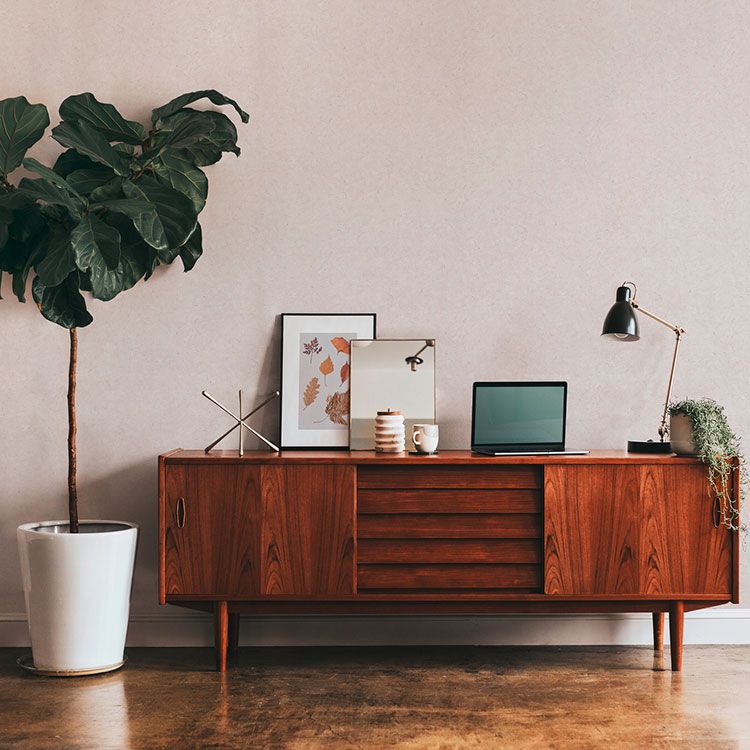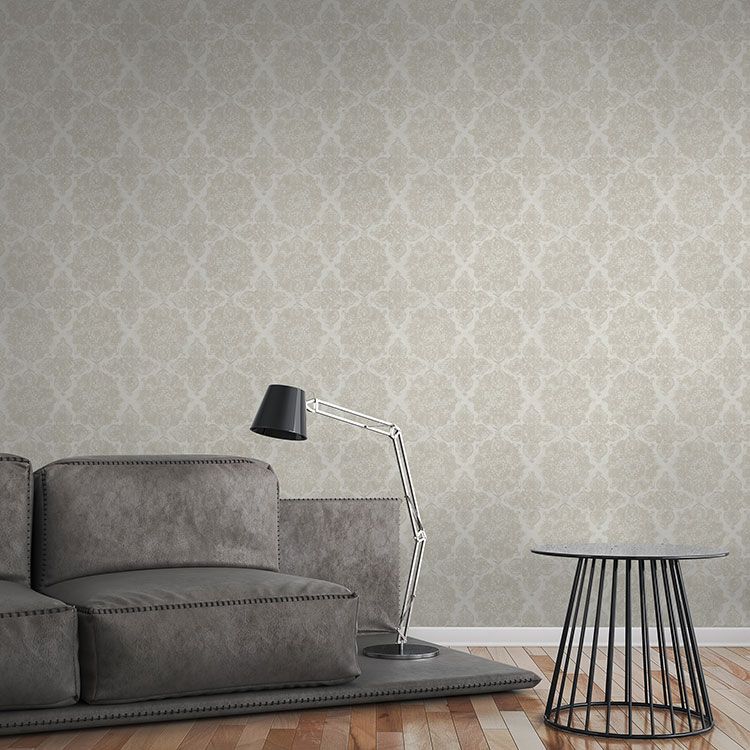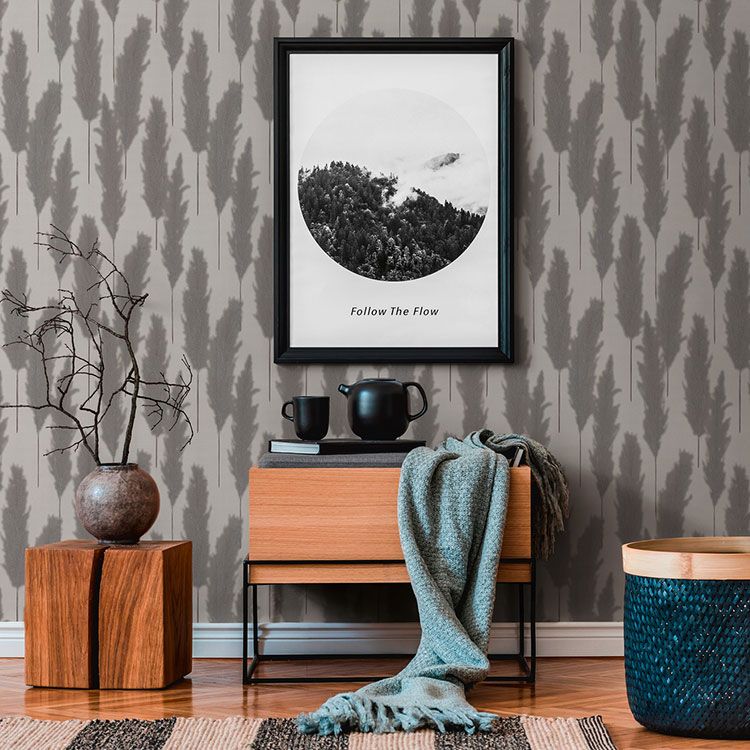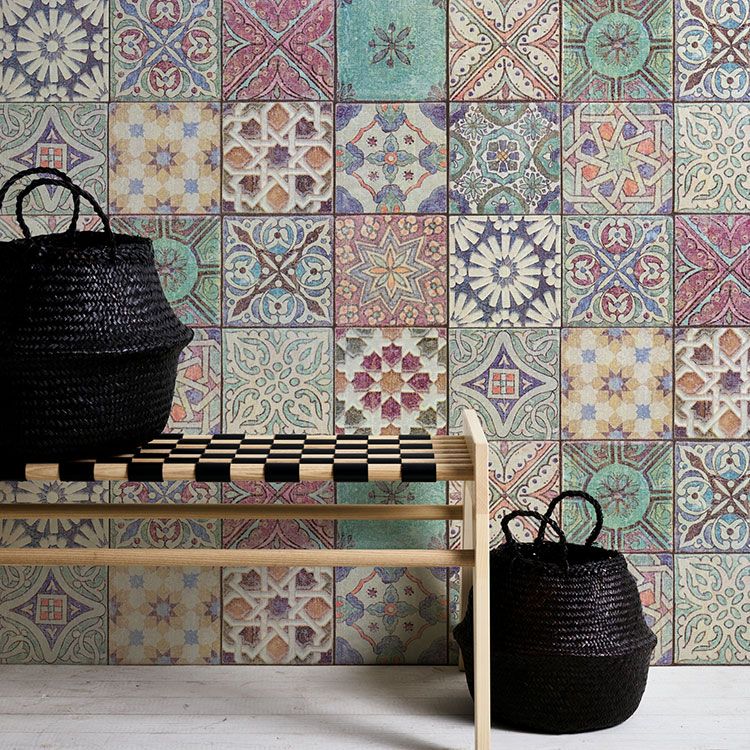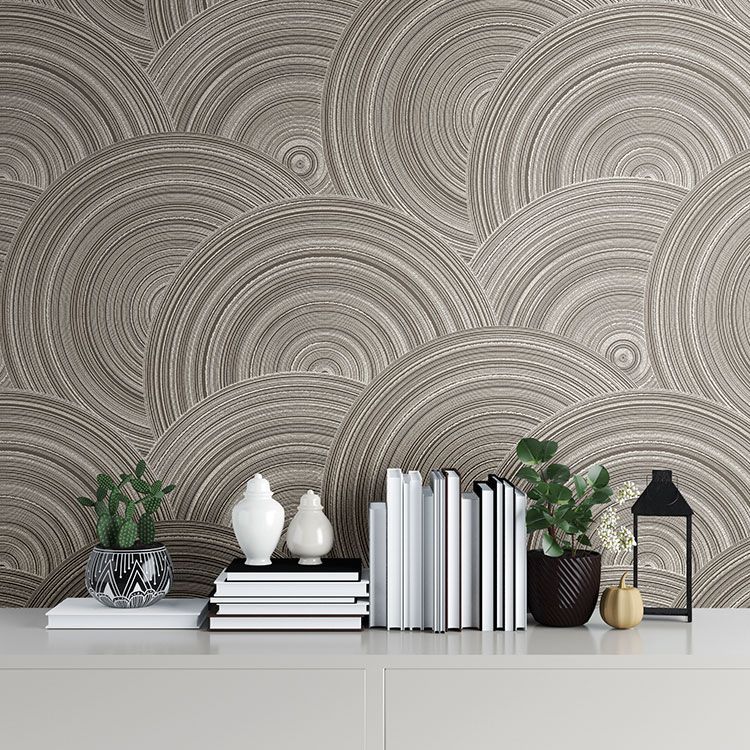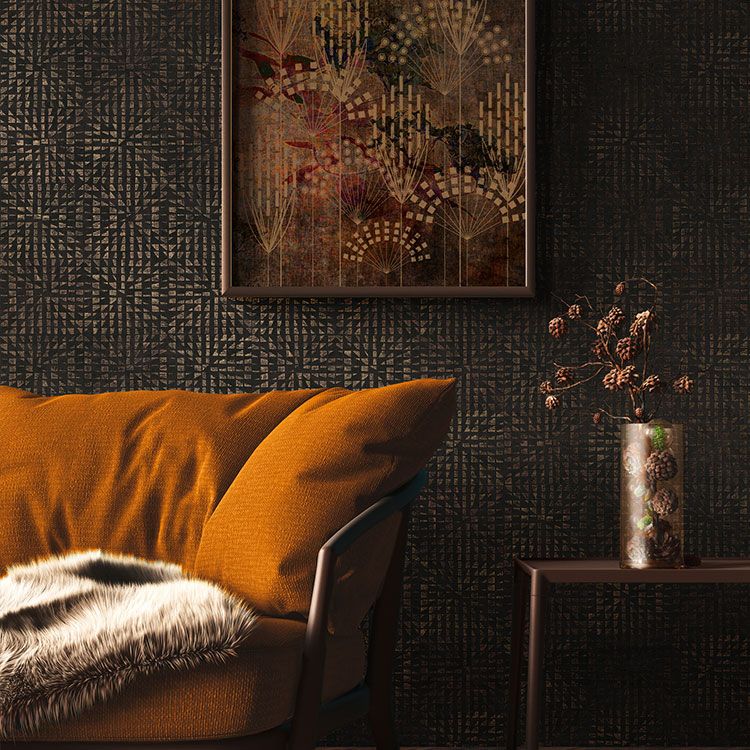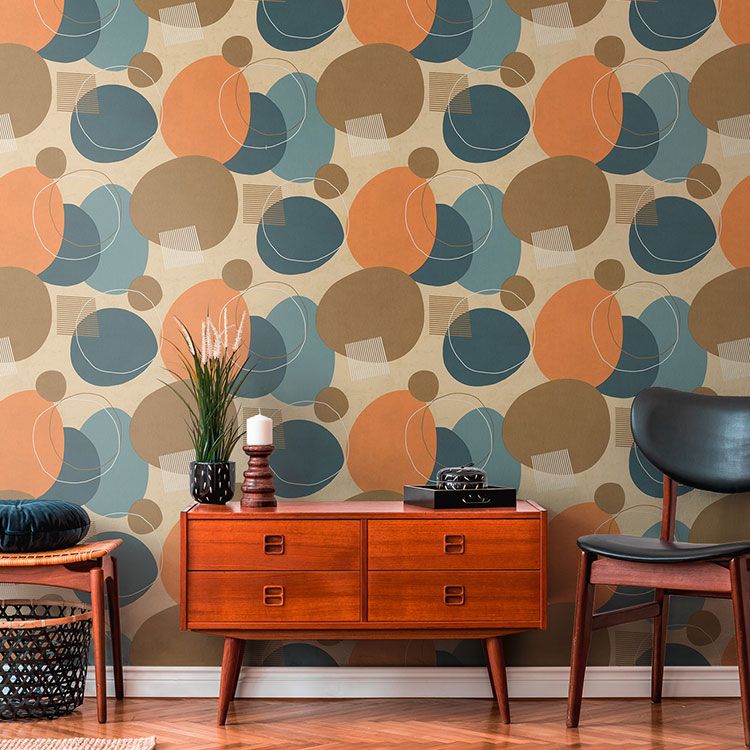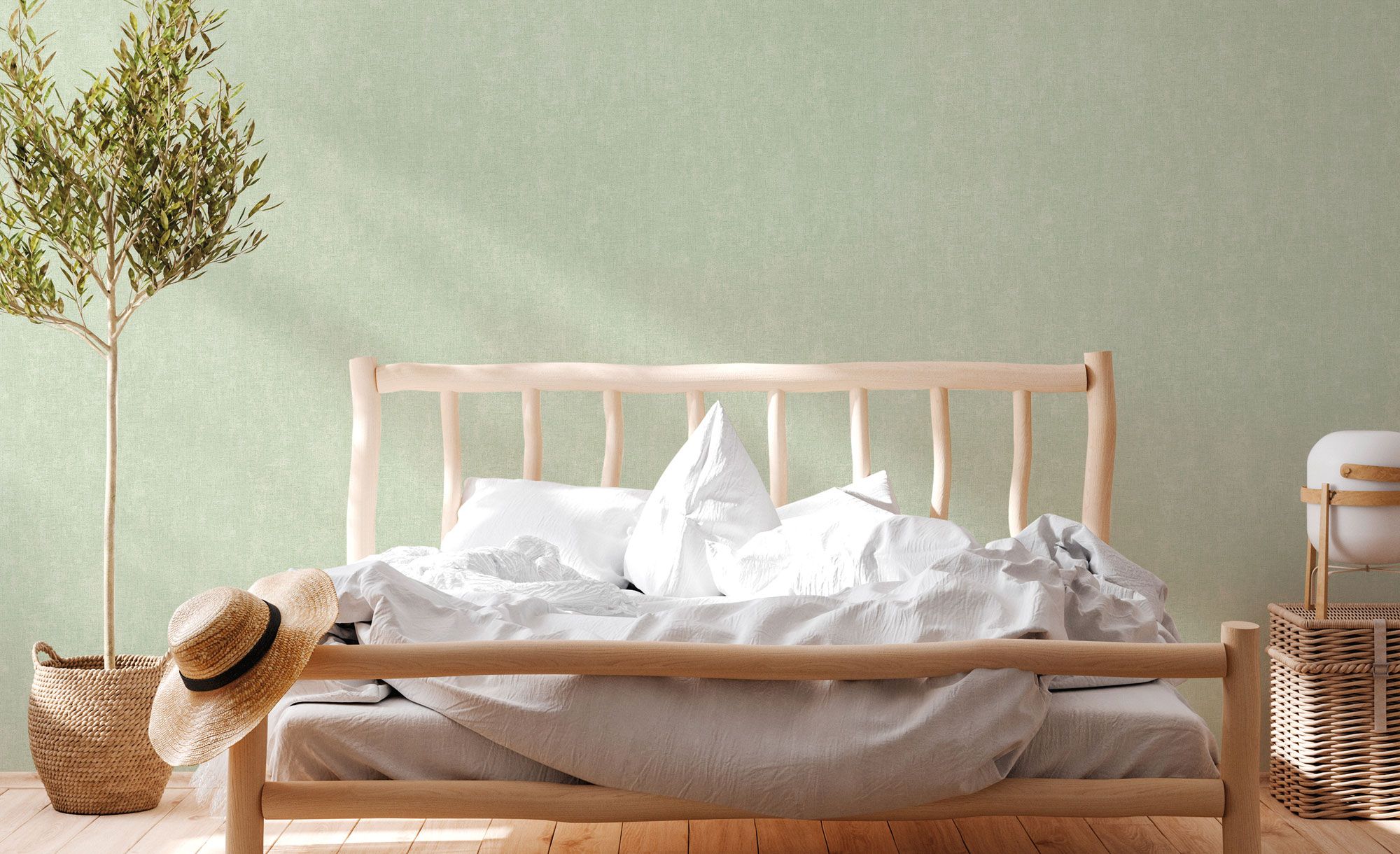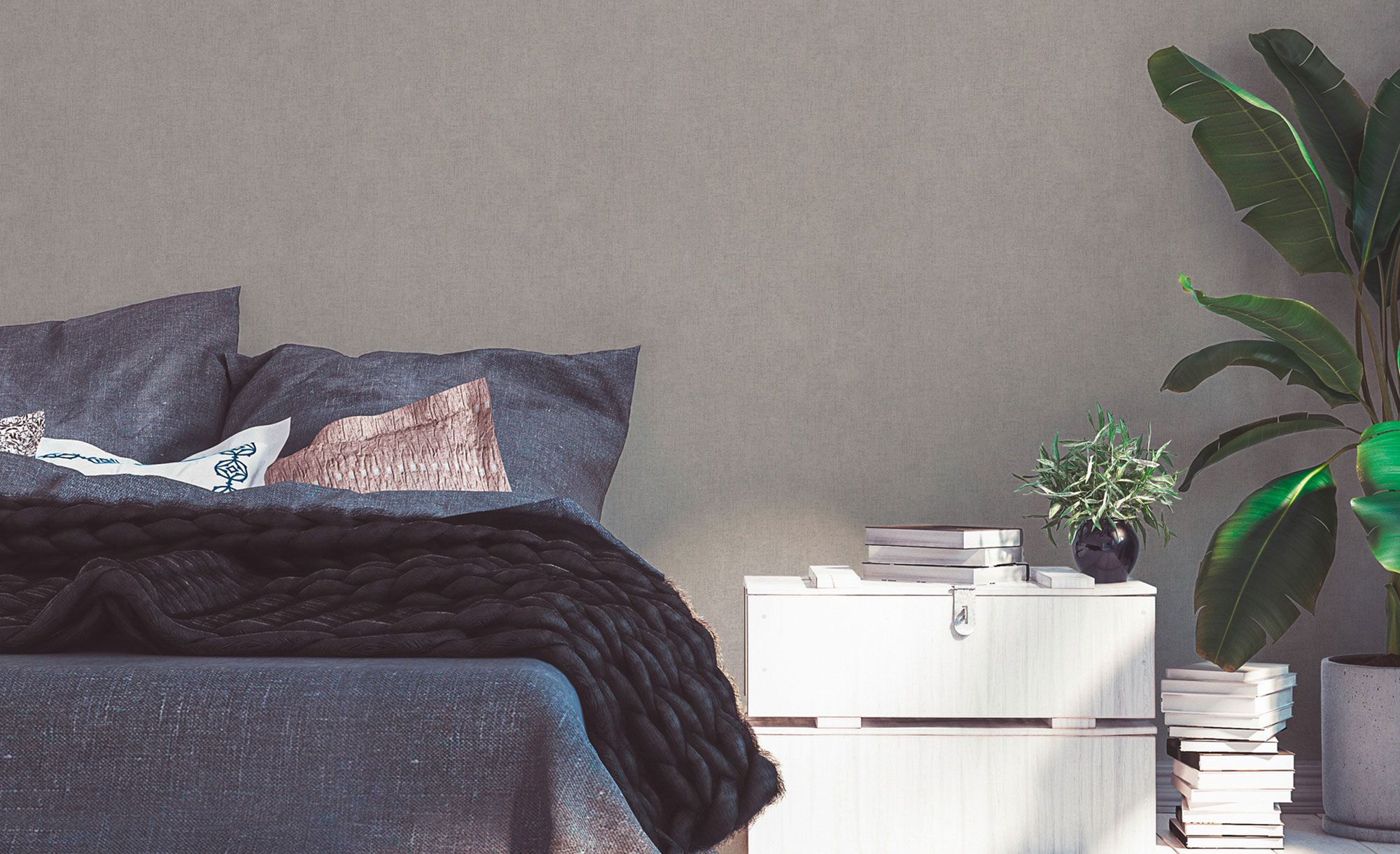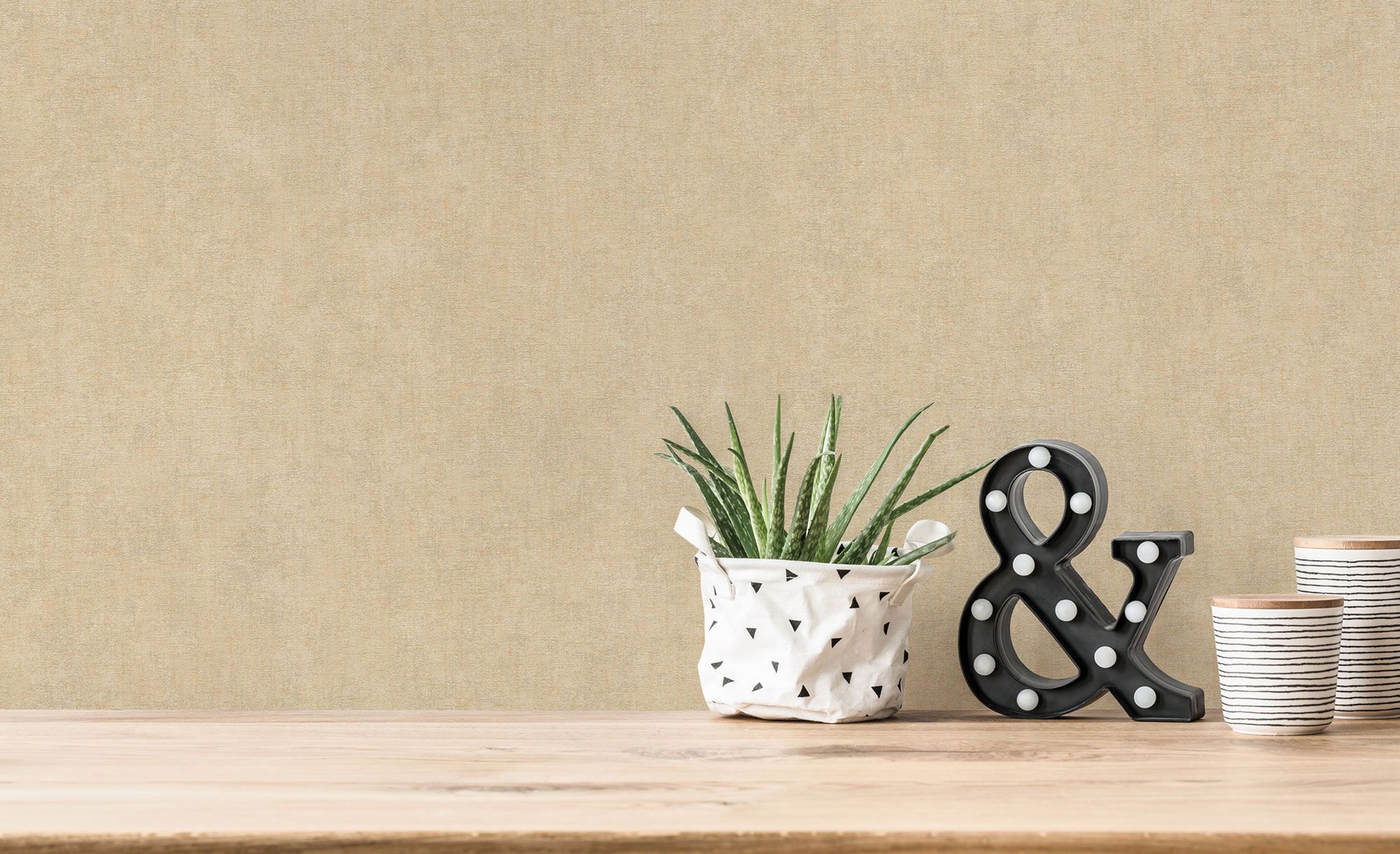Wallpapering with a repeat
The pattern attachment & repeat must be taken into account for wallpapers that have a striking structure and a repeating pattern or motif.
Here you can find out exactly what the technical terms mean, why it is so important to pay attention to the wallpaper symbols and how you can ensure that the wallpaper is applied to the wall with the perfect pattern.
These topics await you in our article:
- What does repeat mean?
- What do I need to consider when wallpapering with a repeat?
- How can I tell if the wallpaper has a repeat?
- What does pattern offset mean?
- What do I need to bear in mind when offsetting patterns?
- What do the symbols on the wallpaper mean?
- Wallpaper without a repeat
- Wallpaper with a straight border
- Wallpapers with a staggered pattern
- Seamless pattern repeat - correct cutting
- Wallpaper without pattern repeat
- Calculate the roll requirement for patterned wallpaper
- Creative wallpapering with patterned wallpaper
What does repeat mean?
When we talk about repeat in connection with wallpaper, we mean the running length of the wallpaper pattern, i.e. the section of wallpaper within which the complete pattern or motif is reproduced once. The repeat cannot always be recognized by a clear change or clear break in the motif, but only becomes apparent when you see two strips next to each other. The repeat is indicated in centimeters as standard and can look like this: 64/0 or 64 cm, 64/32 or 64/32 cm.
The running length, sometimes also called the pattern height, is the first number in the example, i.e. 64 cm. The pattern is therefore only repeated from a height of 64 cm. Other common repeat measurements are 32/26/16/8 cm for smaller patterns. Occasionally, the repeat is also marked with 0 cm or not noted at all, which is often the case with single-colored wallpapers. Here you do not have to take a repeat into account when cutting and wallpapering.
The different notation is due to the manufacturer's conventions on the one hand, and on the other hand, information on the pattern offset (you will find an explanation of this further down the page).
What do I need to consider when wallpapering with a repeat?
Wallpapers with a pattern must be wallpapered with consideration for the pattern repeat and pattern offset to ensure a seamless overall look. When wallpapering a subsequent strip, the smooth transition of the pattern between the two wallpaper strips must be ensured.
The running length of the pattern and, if applicable, the offset determine where the wallpaper is cut to size; the amount of waste varies depending on the pattern.
Before cutting the strip to size, you should therefore first check, visually or by measuring, where the cut of the wallpaper strip is. Once you have determined the connection, the wall dimensions are taken from this point and then cut to size. The aim is to place the motifs and shapes of the wallpaper strip by strip in such a way that the pattern transitions from one wallpaper strip to the next.
How can I tell if the wallpaper has a repeat?
You can often tell from the product image whether you should consider a pattern for your desired wallpaper, but you can be sure if you look at the insert on the wallpaper roll. In addition to information on the roll format, the article number and production number, you will also find details on the pattern repeat and the pattern attachment.
The repeat is shown as a simple number, such as 64/32 or 32 cm. The running length of the entire pattern in the example is 64cm, a subsequent strip must be glued with an offset of 32cm. You can find out more about pattern offsets in the next section.
What does pattern offset mean?
The clue to the meaning is in the word, meaning the distance by which a wallpaper strip must be shifted so that the pattern of the individual strips creates a seamless overall picture. The pattern offset is stated together with the repeat length in centimeters, e.g. 64/32 cm. The first numerical value describes the total length of the pattern, i.e. the repeat, the second number 32 cm describes the offset of the pattern. This example is a wallpaper with a "staggered pattern", the pattern is shifted by half the pattern height.
In addition, there is also the "straight pattern" where the pattern is always wallpapered at a parallel height. Wallpapers without a pattern repeat and a pattern embossing are "free of embossing".
What do I need to bear in mind when offsetting patterns?
The pattern offset, also referred to as the pattern base, indicates how far the wallpaper needs to be moved up and down in order to achieve a uniform pattern on all wallpaper panels. When cutting the wallpaper strip to size, the distance of the offset must be taken into account, so depending on the starting point, a piece of wallpaper is occasionally wasted. It is helpful to orientate yourself on prominent points of the pattern and to determine the offset points of the pattern before gluing and cutting.
What do the symbols on the wallpaper mean?
For a perfect pattern transition, you need to pay attention to the correct pattern offset; the wallpaper symbols show whether the wallpaper has a pattern offset and if so, which one.
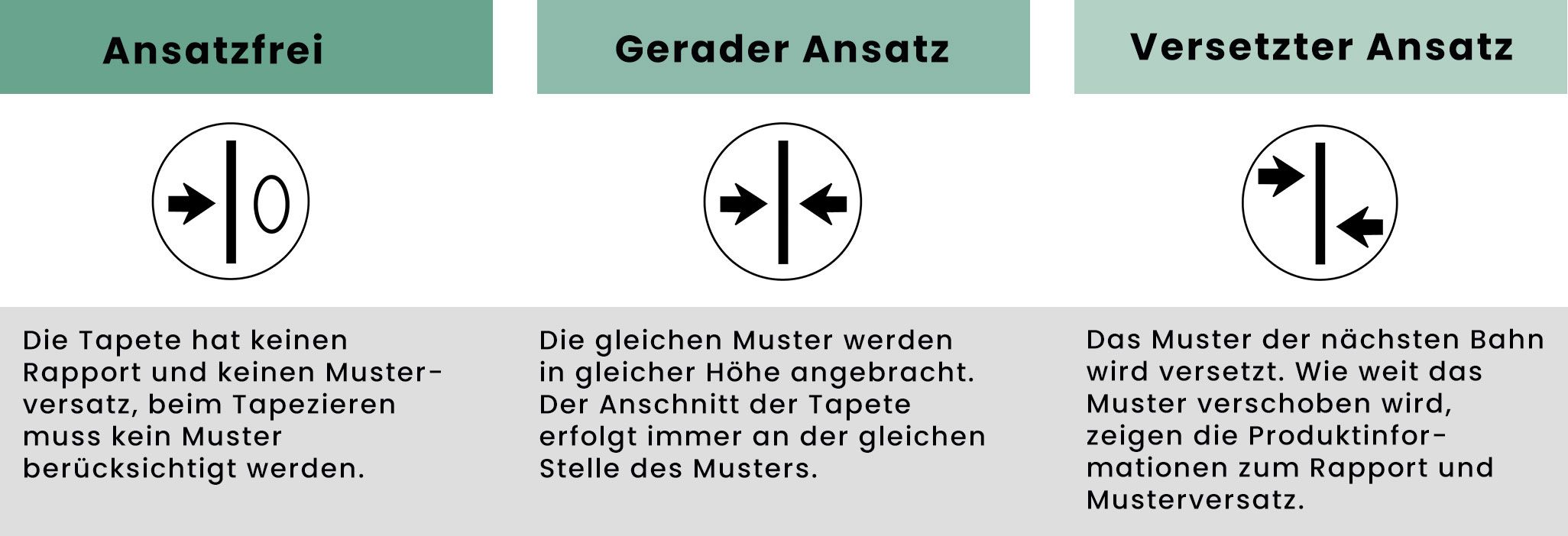
Wallpaper without a repeat
Wallpapers without a pattern are seamless, so no repeat or offset needs to be taken into account. Most seamless wallpapers are plain or only have a subtle color pattern. They are particularly easy to wallpaper and cause no waste as the strips are cut and glued continuously.
Wallpapers with a staggered pattern
These wallpapers are wallpapered taking into account the pattern offset, the wallpaper pattern is offset by the specified distance to create a seamless wall picture. The offset must be taken into account when cutting. Every second strip is the same, i.e. strips 1, 3, 5 etc. are identical, the strips 2, 4, 6 etc. in between have an offset cut.
Seamless pattern repeat - correct cutting
In order to create a harmonious overall look, the pattern repeat & pattern of the wallpaper must always be taken into account when wallpapering. If you look at the length of the pattern and the pattern repeat before cutting it for the first time, you will avoid unnecessary waste and can coordinate the pattern exactly. For wallpapering beginners, it is helpful to first lay out two or three rolls of wallpaper next to each other and arrange them in such a way that the design results in a harmonious pattern without interruption; with the help of striking visual features, you can recognize the repeat and also check the offset of the pattern in the case of a wallpaper with a staggered border.
Once you are sure, it's time to cut the wallpaper to size. Wallpapering professionals measure the wall and panels and cut the required number and variations of panels directly. However, beginners can also proceed strip by strip and visually check the correct length and starting height of the subsequent wallpaper. Determining the correct length of the strip depends on the type of attachment:
With offset-free wallpapers, each length of strip corresponds to the wall height including the allowance. The strips can simply be cut in sequence regardless of the pattern, there is no waste.
With a straight pattern, each strip is cut identically, the length corresponds to the wall height including the allowance and always contains the same number of pattern repetitions. If the wall height is shorter than a multiple of the repeat, the rest of the pattern must be cut off. The waste is comparatively small due to the parallel wallpapering, but must be taken into account when determining the roll requirement. We explain how the requirement is calculated in the section "Calculating roll requirements for patterned wallpaper".
Wallpaper without pattern repeat
These include plain wallpapers and motif wallpapers in panel design. With plain wallpapers without a texture or color pattern, a transition between the individual wallpaper panels cannot be seen, which is why the seamless wallpapers without a repeat can be applied easily and simply. Patterned wallpapers that have a self-contained design, such as striped wallpapers, are wallpapered in the same white. There are also design panels where a pattern or motif only runs within the width of the strip and does not contain any transitions. These wallpapers are usually wallpapered as a simple accent wall, but can also be used side by side to create a highlight wall.
Incidentally, photo wallpapers are motif wallpapers that do not have a repeat, but where the exact positioning of the motif is still important. For the perfect illusion of a large wall motif, the seamless transition between the individual panels must be ensured with photomurals.
Calculate the roll requirement for patterned wallpaper
Before you buy the wallpaper you want, you need to determine the right number of rolls. The waste from patterned wallpaper with a straight or staggered pattern will affect the total number of rolls required.
To work out how many rolls of wallpaper you need, you'll need some basic measurements and the right approach. Alternatively, you can use our roll calculator, which automatically calculates the estimated requirement and also takes the pattern repeat into account.
If you prefer to calculate your requirements yourself, you need to differentiate between different wallpapers and proceed as follows:
Wallpaper requirement for seamless patterned wallpaper
The calculation for seamless wallpaper is very simple: you need the length of the area to be wallpapered, i.e. the room perimeter or wall length, and the room height including an allowance of 5 cm. Use this to determine the square meters to be wallpapered and then divide the result by 5. A standard roll of wallpaper covers an area of just over 5 m², so divide the square meters determined by this value.
As there is little to no waste with seamless wallpaper, round up the result of the second calculation and you now know the number of wallpapers required.
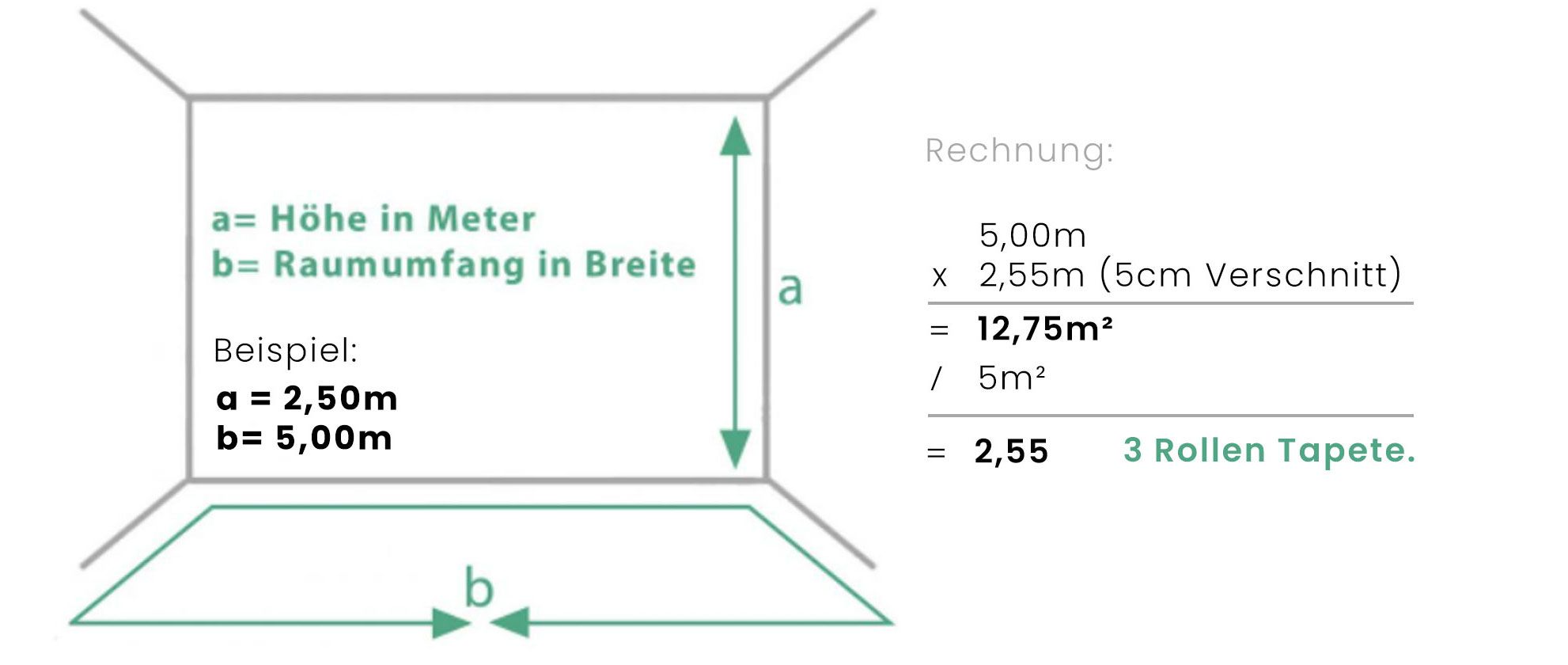
Wallpaper requirements for patterned wallpaper with a straight border
First determine the length of the roll by adding the wall height and the allowance. The length is then divided by the repeat (= pattern length) of the wallpaper and the result rounded up. Now you know how many pattern repeats you need per strip. The number of pattern repeats multiplied by the repeat length tells you how long a strip is, including the trim. Using this length, you can now determine how many panels you will get out of a roll of wallpaper, divide the running length of the roll (standard is 10.05 m) by the calculated panel length and round down to a whole number.
In a second calculation, you determine the number of wallpaper panels required by dividing the wall length by the panel width of 0.53 cm. In the final step, divide the number of panels required by the number of panels per roll to get the required number of rolls.
Are you clear? Take a look at our calculation example, which illustrates the calculation once again. Or simply use the roll calculator, which takes all the calculations into account for you and gives you the number of rolls required.
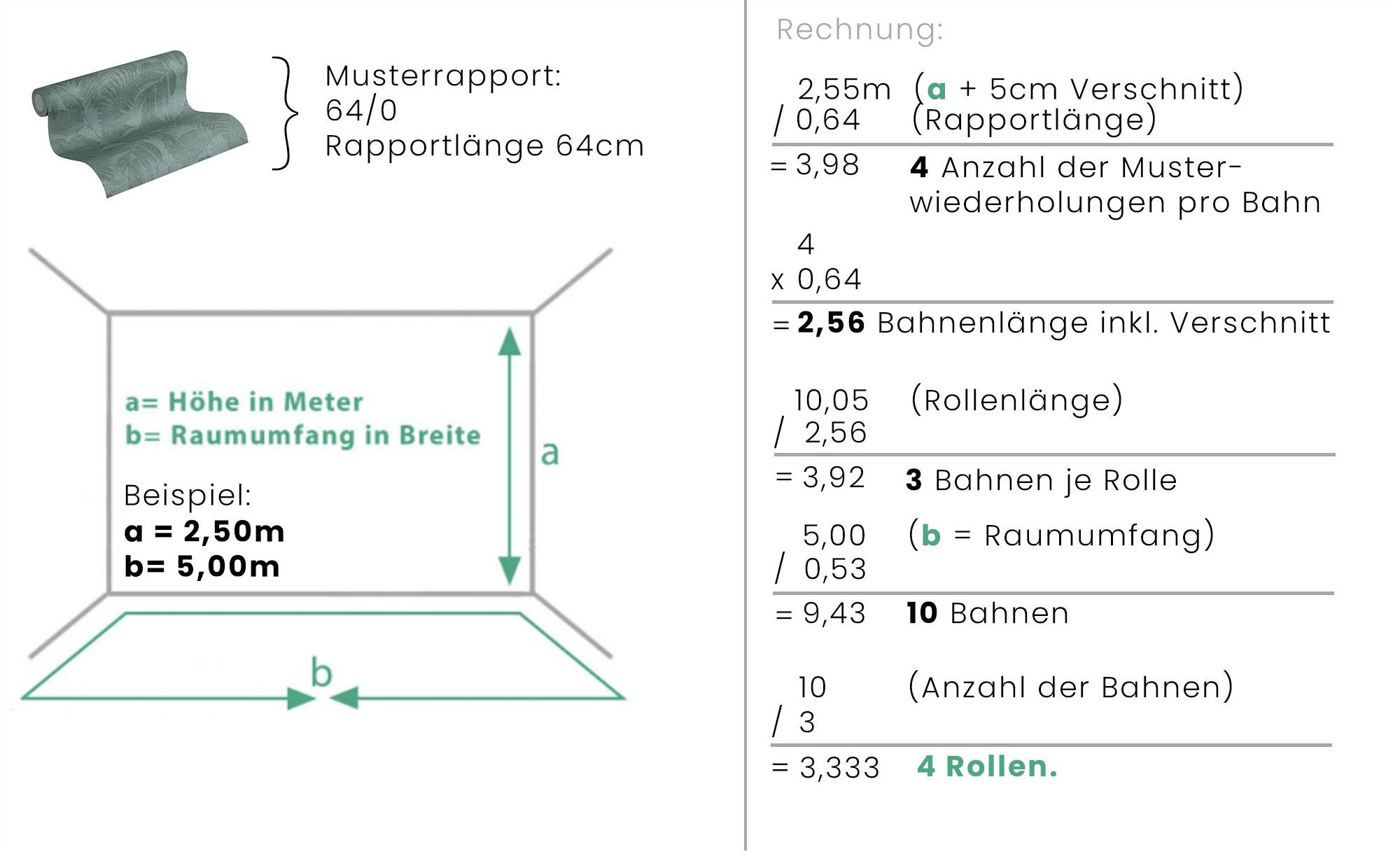
Wallpaper requirements for patterned wallpapers with staggered pattern:
The calculation of roll requirements is very similar for wallpaper with an offset backing. The only difference is in the length of the strip, where you not only add the wall height and the allowance, but also the pattern offset. Then continue as described above to arrive at the roll requirement. In the example you can see the calculation method described again.It's easier if you rely on the roll calculator, which plans the waste for you and tells you how much wallpaper you need to order with just 2 values.
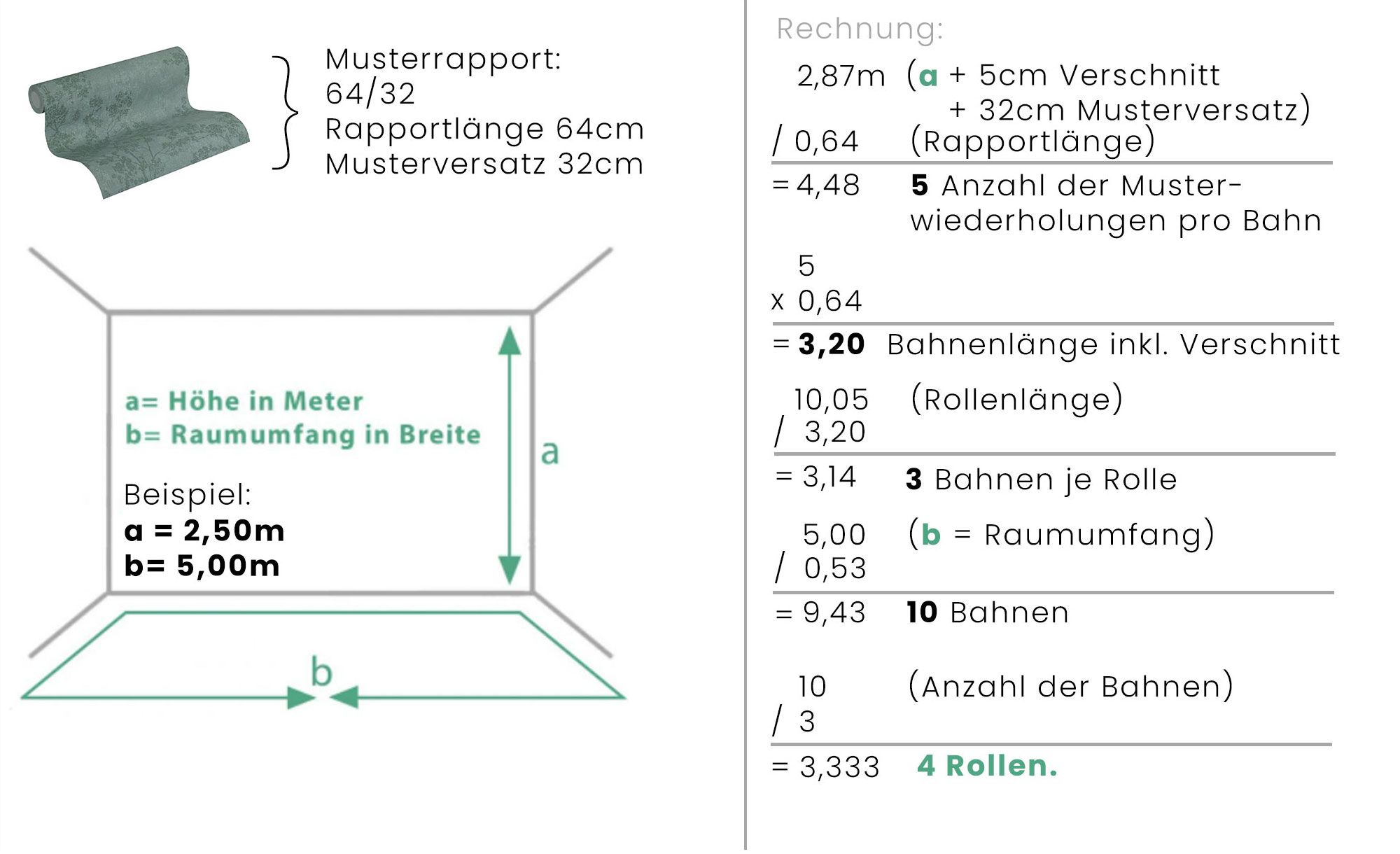
Experienced wallpaperers use matching off-cuts to wallpaper reveals, for example. This reduces the need for rolls, but the work requires more precision and time.
Creative wallpapering with patterned wallpaper
Throw the rules overboard and let your creativity run wild to create new murals and individual designs for your living space.
Instead of wallpapering from top to bottom, you can try horizontal stripes and apply the wallpaper horizontally to the wall. Whether you pay attention to the pattern repeat is entirely up to you. Perhaps you want to break the predetermined pattern and deliberately wallpaper against the pattern repeat & offset.
You can also play with unexpected combinations and express your style. A patterned wallpaper doesn't always have to fill the wall; it can also be decorative as a single panel.
There are no limits to your imagination: turn the wallpaper upside down and change the orientation of the pattern, so you can make it rain flowers and rediscover ornamental shapes, for example.
tapetenshop.de
Dein Tapetenshop Berater




